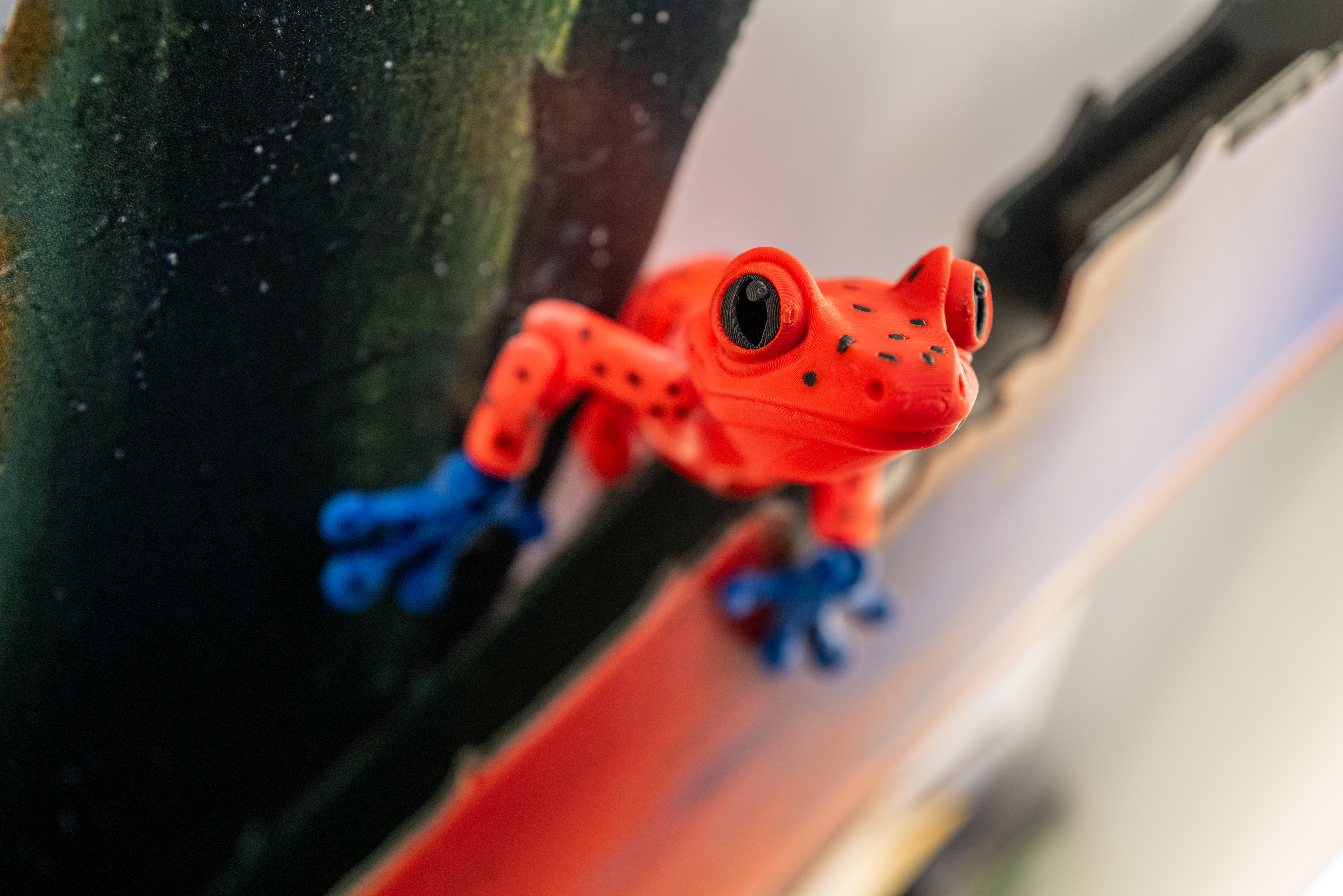Blog

Animals of Tropical Forest Panama
Every three years, the Tropical Forest Conservatory undergoes a complete makeover to showcase the ecology of tropical forest regions around the world. This past March, Phipps unveiled its new Tropical Forest exhibit highlighting the plants, culture and even the animals of Panama, all inspired by Phipps staff members' journey to Darién National Park. As you stroll through the Tropical Forest Panama exhibit, you’ll get an close up look of various native animals that play a critical role in keeping the forest ecosystem healthy in Panama. Let’s take a look at some of our amazing animals on display!
Cockroaches, decomposers that help with recycling nutrients in the forest system, can be observed right in our exhibit! Our Integrated Pest Management Specialist, Braley Burke, informs us that Panama has many native cockroach species. The species that are currently at Phipps are Madagascar hissing cockroaches, a representative species that would not usually be found in Panama. Generally, cockroaches are beneficial insects that live in the dead litter of the forest floor and eat the dead material that they come across. Consuming this material helps prevent buildup while releasing complex nutrients that would otherwise be concealed.
Another creature you can observe is the Whip Scorpion. The species at Phipps is a Phrynus whitei, or Central American tailless whip scorpion which is native to Panama. In the forest ecosystem, these scorpions act as predators that keep roaches, beetles, crickets, and other decomposers in check. Braley says, “They eat these animals in order to avoid overpopulation in the area.” Harmless to humans, whip scorpions eat small critters by using their front legs (which look like whips) to detect prey, then they use their modified mouth parts (that look like claws) to quickly snatch their prey.

Centrally located in the exhibit, the poison dart frogs can be found in the Bromeliad Station that highlights how poison dart frogs rely upon this family of plants. Proving that everything in nature is connected, bromeliads have a mutualistic relationship with many animals including the featured frog species. The bracts, or leaves of the bromeliads, act as a place where frogs can breed, lay and nurse their tadpoles. Through this, the bromeliads gain nutrients that can be absorbed and used for growth!

Alongside these fascinating animals, there is a myriad of beautiful plant materials and rich culture to find throughout the exhibit. Researching, planning and curating Tropical Forest Panama was an intensive multi-year process, with Phipps’ staff traveling to the region to observe and explore the culture firsthand. Tropical Forest Panama is now open and can be viewed from 9:30 a.m. – 5 p.m. daily and until 10 p.m. on Fridays. Timed tickets must be reserved in advance; for more information and to reserve tickets, visit phipps.conservatory.org/Panama.
Photos © Paul Vladuchick

